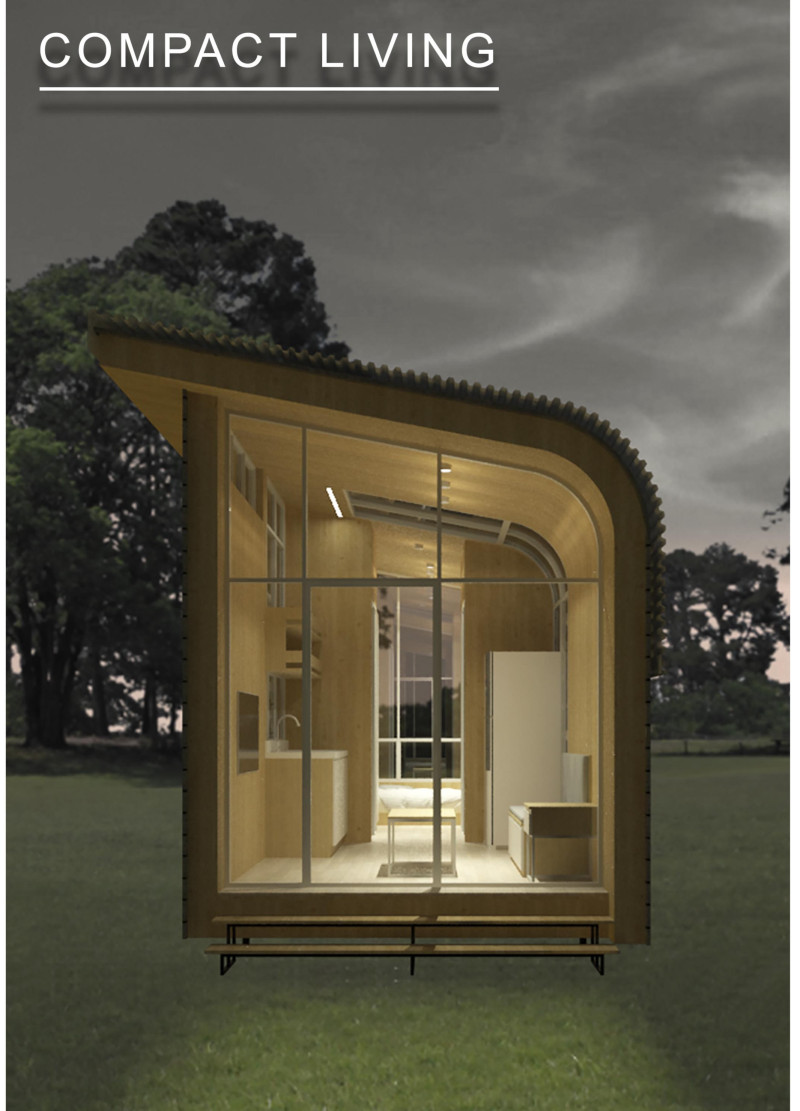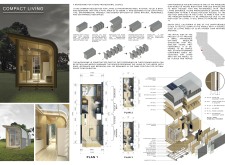5 key facts about this project
A microhome designed for young professionals addresses the urgent need for affordable housing in urban areas, particularly in places like Santa Cruz, California. With a compact size of 23.95 square meters, it combines all necessary living spaces—such as a living/working area, kitchen, toilet and bath, and a bedroom—into a single layout that maximizes efficiency and comfort.
Design Features
The design begins with a rectangular base that transitions into a streamlined form, which enhances the flow of movement within the space. One notable aspect is the curved roof, which serves a functional purpose by managing rainwater. This design allows for water collection to be reused for irrigation and toilet flushing, showcasing a commitment to sustainable practices.
Natural Light and Ventilation
Natural light and air circulation are important in this microhome. Openings at both ends enhance airflow, while a window helps to release warm air. This focus on natural elements reduces the need for artificial lighting and mechanical cooling systems, creating an energy-efficient living environment.
Modular Construction and Adaptability
The microhome uses a modular approach to construction, allowing flexibility in how spaces are arranged. Fixed elements like the entrance and bedroom ensure optimal layout while enabling adjustments to meet individual needs. This adaptability caters to young professionals who may have varying lifestyle requirements.
Material and Sustainability
Environmental responsibility is emphasized through careful material selection. The roof is made of translucent polycarbonate, which provides thermal efficiency and ample daylight. Photovoltaic panels are incorporated to support energy needs. Inside, drywall and wood cladding contribute to insulation and offer a warm aesthetic.
The design features a curved roof that draws attention and blends functionality with modern living. This detail highlights not only architectural intent but also the effort to provide a practical and enjoyable living space for its residents.



















































